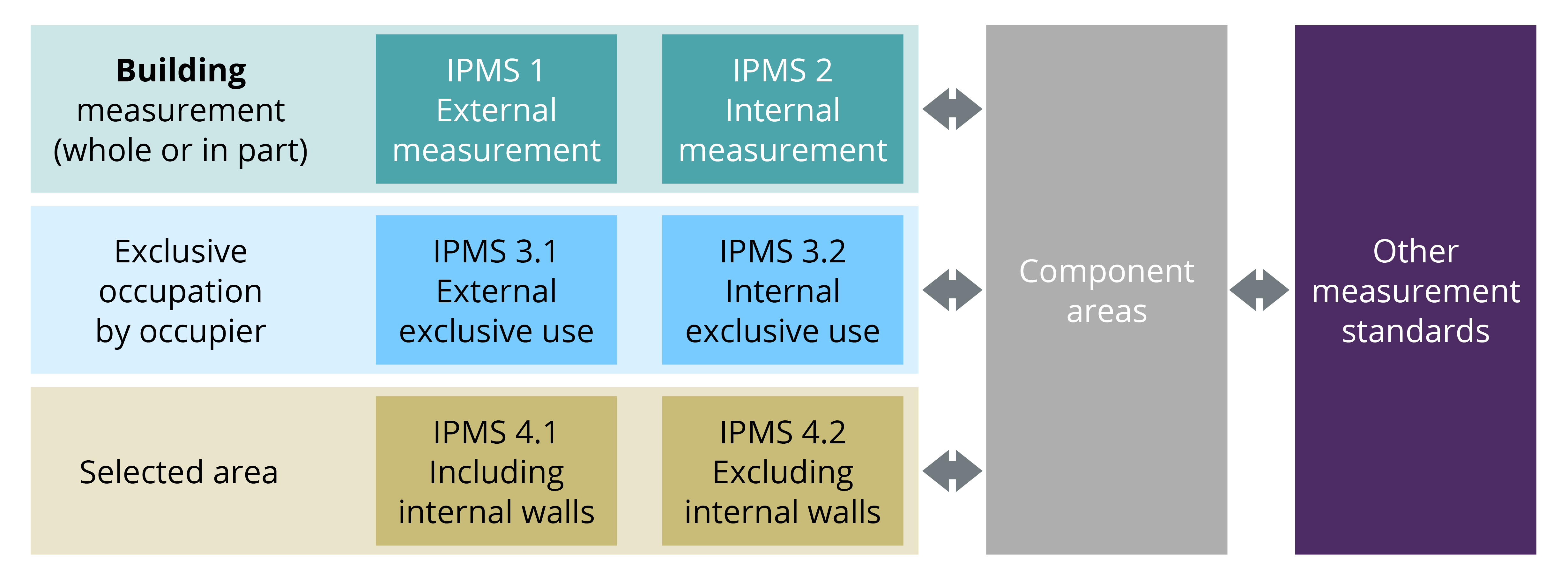
It has been ten years since the International Property Measurement Standards Coalition (IPMSC) was formed. Established on 30 May 2013 after a meeting at the World Bank in Washington DC, the coalition aimed to help align measurement practices in a global investment environment to ensure fairness and transparency for all stakeholders.
Since the coalition's foundation by 56 organisations it has continued to grow, and now comprises 88 members. More than 200 companies and governments have committed to use the IPMS, and with the publication of IPMS: All Buildings in January – harmonising previous versions of the standards – adoption is set to grow.
Committee researches and sets technical standard
In July 2013, the IPMSC selected real-estate experts from around the world to form its Standards Setting Committee (SSC). The SSC has continued to evolve over the past ten years and currently includes academics, architects, facilities managers, real-estate fund and asset managers, valuers, and specialists in development and construction.
To ensure that the SSC considered only technical matters as part of this standards-setting process, the coalition determined that the committee would act independently when drafting the IPMS.
The SSC created IPMS through a transparent, detailed and inclusive process. It supports associated financial reporting and valuation standards, such as the International Financial Reporting Standards (IFRS), the International Valuation Standards (IVS) and, in the US, the Uniform Standards of Professional Appraisal Practice (USPAP).
The committee also spent considerable time researching established standards to ensure that existing intelligence would not be wasted. Its research found that practices varied substantially across local and global markets. In some instances, office measurements could vary by as much as 24% and residential measurements by up to 58% depending on the standard adopted.
No existing measurement standard was found suitable for adoption internationally; IPMS are not therefore a hybrid of other standards. As such, they introduce concepts that may be new to some markets.
New version harmonises measurement of all buildings
The SSC has focused on issues directly related to measuring buildings and calculating areas inside. It acknowledges that different floor area measurements are adopted globally in construction, transactions and valuation, but IPMS: All Buildings enables comparison of differing standards by interfacing them with IPMS, as well as providing clarity for those purchasing or leasing property.
The SSC initially considered IPMS by building classes – namely office, residential, industrial and retail – as they thought it unrealistic to create a single standard that would immediately apply to all classes of buildings, because each has distinctive characteristics that require individual analysis.
However, as part of this process, the SSC ensured that the principles, methodology and measurement practices developed for each IPMS building class would be similar for all buildings in order to be consistent – as another class of building, mixed use, incorporates several building classes – and to aid the eventual harmonisation of the IPMS Building Class standards within IPMS: All Buildings.
IPMS: All Buildings therefore supersedes all standards previously published by the coalition for individual asset classes by harmonising the concepts and objectives in those versions into one set of standards. The new publication is as the name indicates applicable to all types of building, independent of their use or their occupation.
The standards are also sufficiently flexible to be used for different purposes, such as:
- analysis and benchmarking
- construction cost rates and ratios
- conversion between measurement standards
- cost allocation
- insurance
- planning and architecture
- property development
- property financing
- property management
- research
- summary costing
- sustainability and energy efficiency
- valuation and transactions including leasing and sales.
IPMS: All Buildings are high-level, overarching standards that provide guidance on best practice in property measurement. Markets that do not have an established measurement standard are encouraged to adopt them, as they offer the flexibility to measure part of a building or the whole thing before allocating it into separate components.
This flexibility provides a common language that can interface with existing local measurement standards. In time, the SSC expects IPMS to become the primary basis of measurement across all markets.
Unique terms aim to offer global consistency
IPMS: All Buildings adopts unique nomenclature to avoid confusion with existing terms that are, unfortunately, used inconsistently in markets across the world.
The standards have been drafted to let users select the appropriate basis of measurement, without necessarily needing to review the whole document to apply them; rather, they only need to have regard to the specific standard to suit market needs, whether IPMS 1, IPMS 2, IPMS 3.1, IPMS 3.2, IPMS 4.1 or IPMS 4.2.
IPMS is divided into three fundamentally different standards.
- IPMS 1 and IPMS 2 are, respectively, external and internal measurements and can be applied to the whole or part of a building.
- IPMS 3.1 and IPMS 3.2 are external and internal measurements, respectively, required for exclusive occupation, such as the lease of a unit in a multi-tenanted building.
- IPMS 4.1 and IPMS 4.2 are internal measurements required for selected areas, including internal walls and columns and excluding external walls and columns, respectively.
For ease of reference the SSC has named the various standards using the IPMS prefix.
The use of component areas is optional, but they enable analysis of a building as they can be used by differing specialisms such as architecture, building surveying, engineering and valuation that have varying measurement requirements, and can also be used to convert between IPMS and other measurement standards. The IPMS structure and interface with other measurement standards is demonstrated in Figure 1.

Figure 1: IPMS structure
Future articles in this series will explore IPMS: All Buildings in more detail.
Alexander Aronsohn FRICS is technical director at the International Valuation Standards Council
Contact Alexander: Email
Related competencies include: Measurement, Valuation
Use of IPMS
RICS members are expected to advise their client or employer on the benefits of using IPMS. However, it is understood that IPMS is not suitable in all circumstances and in these circumstances RICS members must document the reason for departure.
Accuracy
It is the responsibility of RICS members and RICS regulated firms to adopt appropriate measuring and computing processes so as to satisfy the requirements of clients and users. These requirements can range from a very broad approximation of measured area for some temporary purpose to a precise area calculation for contractual or other reasons.
Professional requirements apply to all measurements
RICS members or RICS-regulated firms are reminded of their overarching ethical and competence obligations under the RICS Rules of Conduct, and more specifically those in the current editions of RICS Property Measurement, UK Commercial Real Estate Agency and UK Residential real estate agency, as appropriate, in relation to the provision of professional advice to clients involving measurements.
In regulatory or disciplinary proceedings, RICS will take into account relevant professional standards when deciding whether a member or regulated firm acted appropriately and with reasonable competence. It is also likely that during any legal proceedings a judge, adjudicator or equivalent will take RICS professional standards into account.

